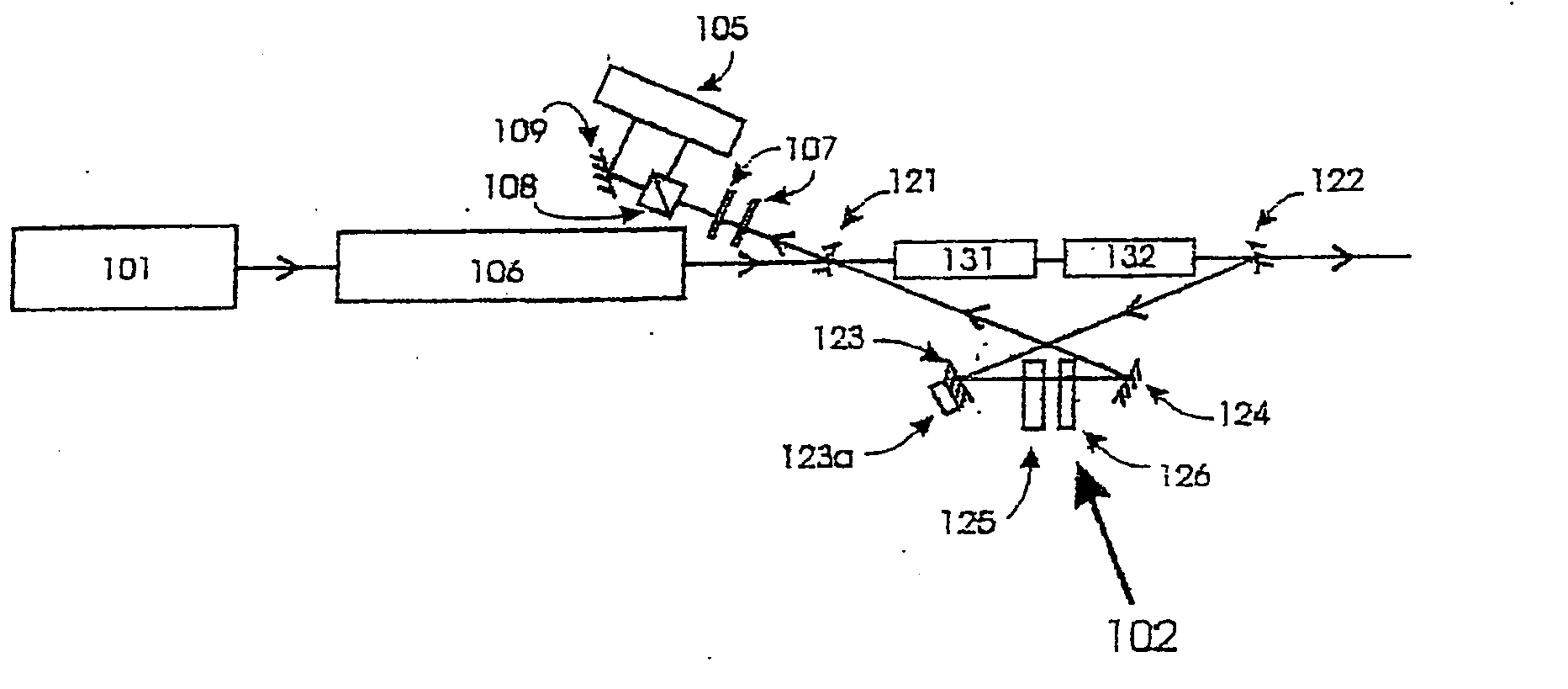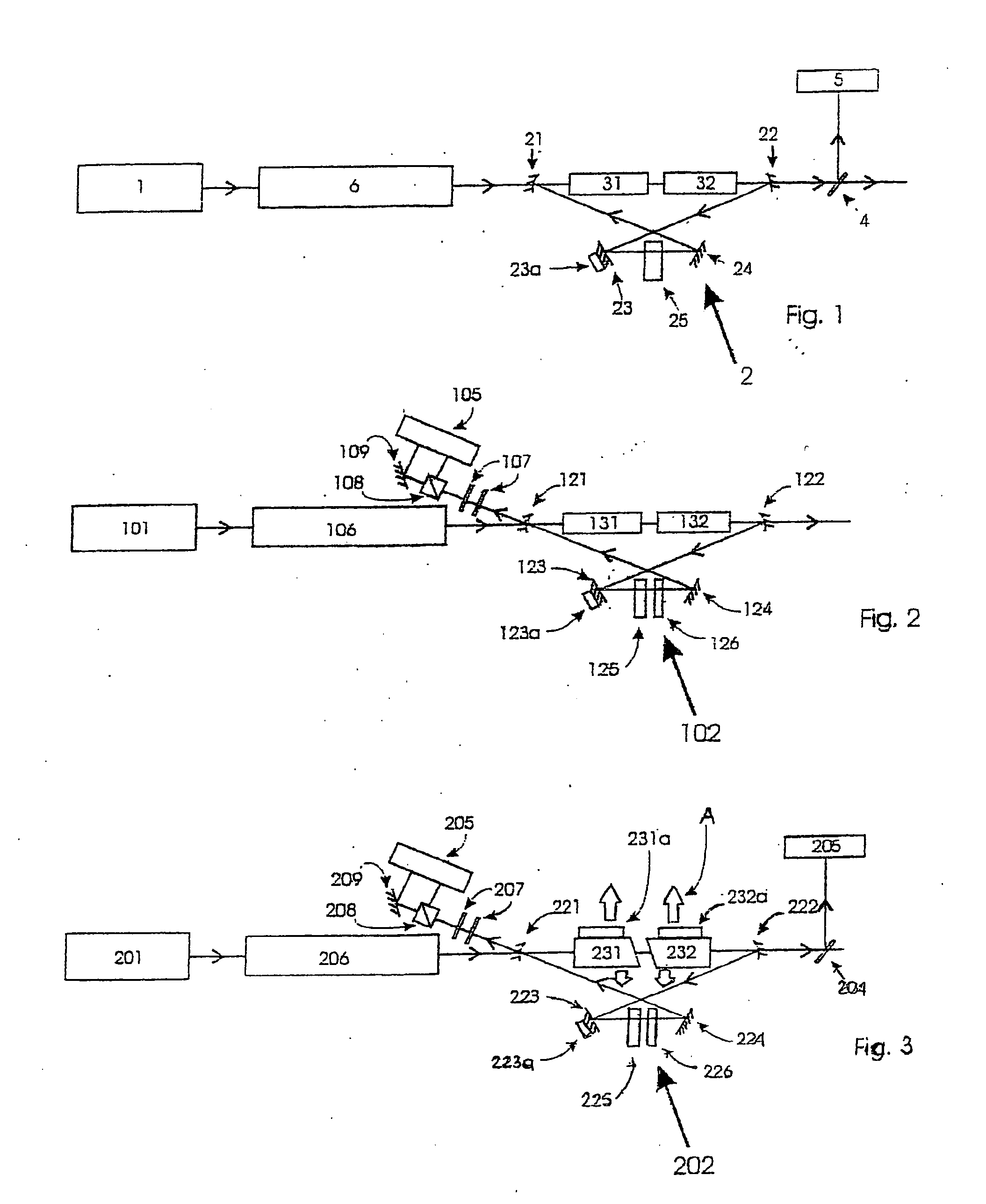Method and Device for Multiplying Optical Frequencies by a Factor 1.5
a technology of optical frequency and factor, applied in the field of laser sources, can solve the problems of not fully satisfying the above mentioned requirements, unable to fully meet the requirements of lasers, and unable to achieve the effect of increasing the efficiency of the opo, and achieving the effect of stronger power depletion of the pump laser
- Summary
- Abstract
- Description
- Claims
- Application Information
AI Technical Summary
Benefits of technology
Problems solved by technology
Method used
Image
Examples
Embodiment Construction
[0023] With reference to FIG. 1, according to the invention there is provided the use of a pump laser 1 which, assuming that the need is to produce output radiation at 671 nm wavelength, emits radiation at 1006.5 nm, corresponding to a frequency F of 297 THz. In this spectral region diode lasers are available suitable for delivering up to 100 mW, and optical fiber amplifiers delivering up to 5 W. Combining these two sources it is thus possible to obtain 5 W of radiation at 1006.5 nm with the required spectral characteristics.
[0024] The actual optical frequency multiplying device comprises a ring optical cavity 2, consisting of four mirrors 21-24 at high reflectivity for radiation at 2013 nm (or, more generally at a frequency F / 2), and highly transparent at 1006.5 nm and 671 nm (that is, respectively, at frequencies F and 3 / 2*F). The high transparency for the radiation at frequency 3 / 2*F is the condition necessary to extract the desired radiation from the cavity. An analogous result...
PUM
| Property | Measurement | Unit |
|---|---|---|
| power | aaaaa | aaaaa |
| power | aaaaa | aaaaa |
| wavelength | aaaaa | aaaaa |
Abstract
Description
Claims
Application Information
 Login to View More
Login to View More - R&D
- Intellectual Property
- Life Sciences
- Materials
- Tech Scout
- Unparalleled Data Quality
- Higher Quality Content
- 60% Fewer Hallucinations
Browse by: Latest US Patents, China's latest patents, Technical Efficacy Thesaurus, Application Domain, Technology Topic, Popular Technical Reports.
© 2025 PatSnap. All rights reserved.Legal|Privacy policy|Modern Slavery Act Transparency Statement|Sitemap|About US| Contact US: help@patsnap.com



